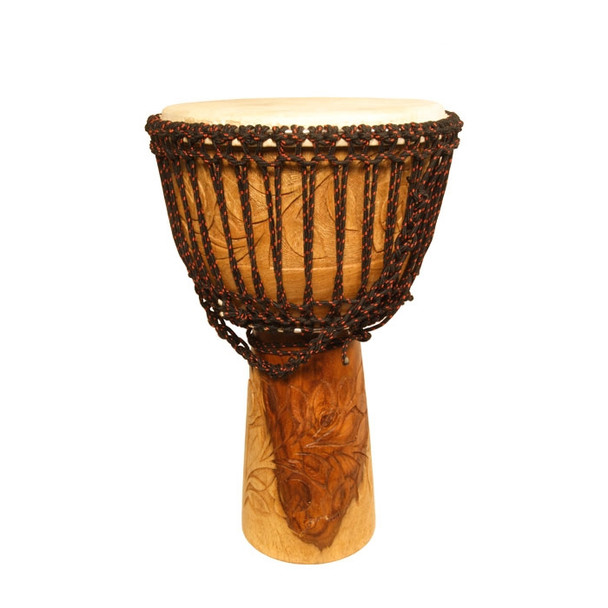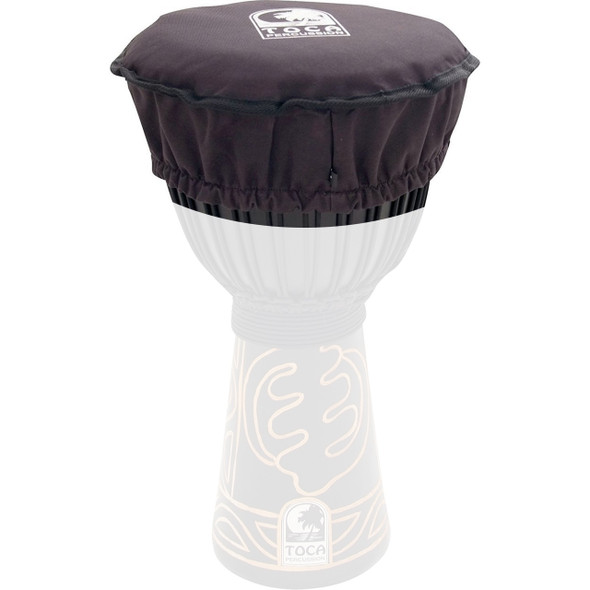Description
The Mid East Djembe has an engraved rosewood body with floral carvings. The natural hair has been removed from the playing surface of the goatskin head producing a crisper sound with higher pitches. The head is tunable by rings and cords.
The main advantage of the Mid East brand of African style drums, which are made in Pakistan, over those from Africa is the rosewood. It almost never cracks and is very tolerant of severe weather conditions.
How to Play Djembe and Care of Djembe
To play the Djembe sit on the edge of a chair. Cross your ankles and tuck them slightly under you. Hold the Djembe between your knees or thighs so that the bottom of the drum rests behind your heels. Djembe players will find a wide range of sounds can be produced from this instrument.
There are commercial head conditioners on the market. However the best treatment for a skin head is use. The more a drum is played the better for the head. The natural oils from your skin will help to keep the head in condition. If you find the sound going a little dull you can re-tune the head using the cords.
Never use harsh chemicals to clean you drum or the head. When not playing your drum do not leave it in a car or vehicle. Keep your drum, like all instruments, away from sources of cold or hot air. Since the head and the body of this drum are natural materials, they will be affected by changes in heat and humidity; therefore try to avoid rapid changes in environmental conditions.
What's In A Name, Djembe or Jembe?
Djembe is the French spelling of a Maninka (pronounced Mande-nka) word. During the French colonization of western Africa, many native words were recorded using the French spellings. Today many Africans argue that use of the "Djembe" spelling is a sore reminder of that colonial domination of their heritage. Today, Africans, and supporters of indigenous peoples, have been developing phonetic spellings for various African dialects. In the culturally sensitive phonetic spelling the French "D" is dropped. If you are a purist, or an African Music devote, you will likely demand the Jembe spelling. However, as you will read below, the non-African spelling may be more appropriate when talking about a drum who's popularity is exploding on an international, inter-cultural, scale. Interestingly, the term Djembe was not popularly used in France. There, the African Drum is known as the Tom-Tom. They erroneously, believed that the Tom-Tom was beaten with the hands to send messages through the jungle (shades of Edgar Rice Burroughs). Actually, the drum used to transmit messages is constructed of a hollowed tree trunk, and beaten with mallets.





